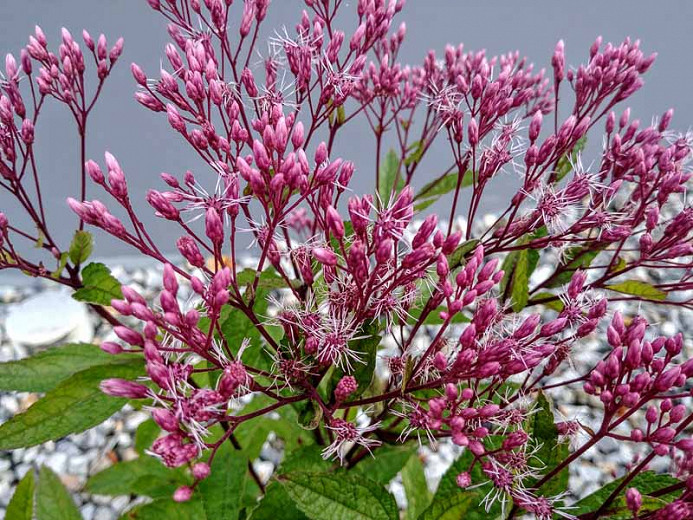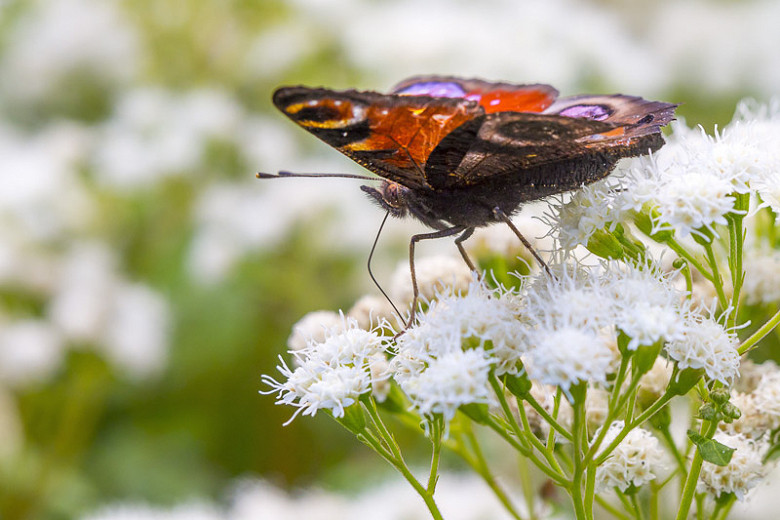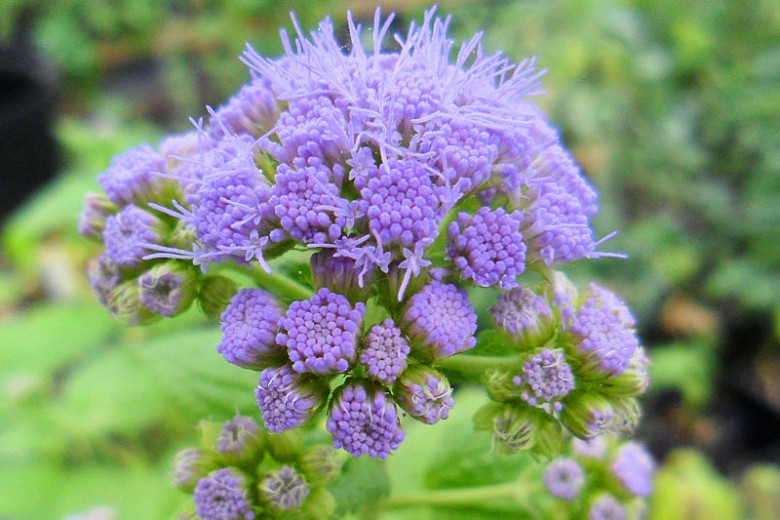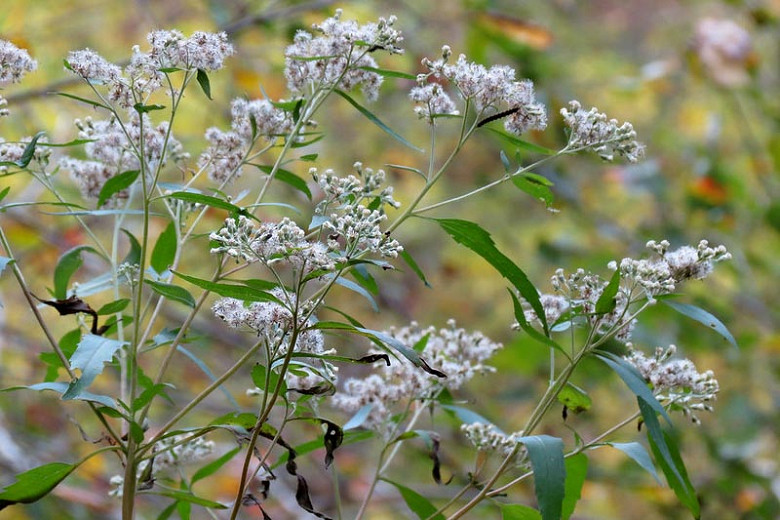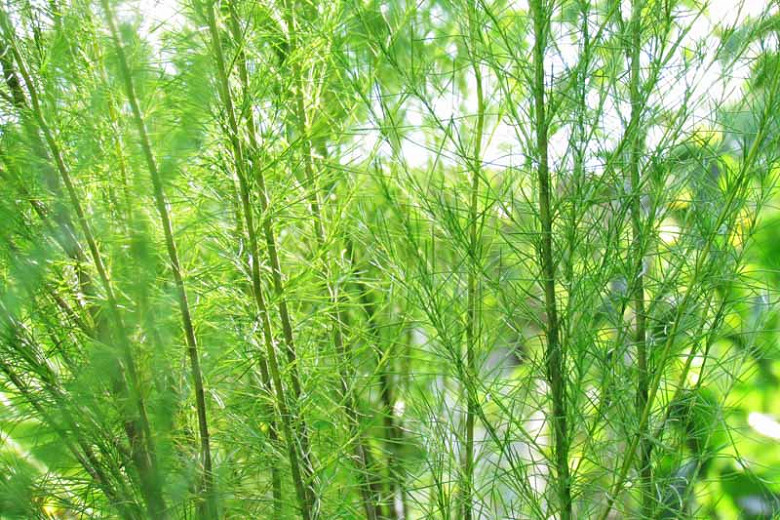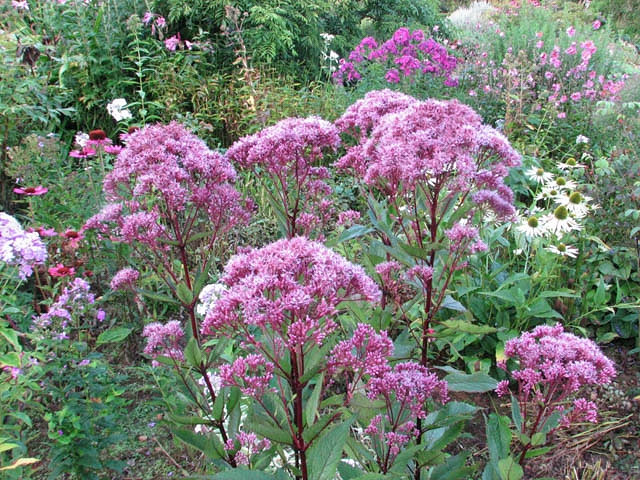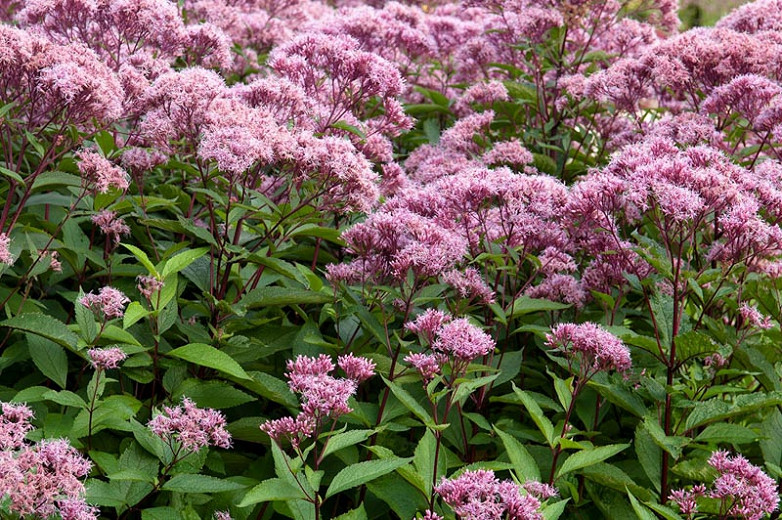Eupatorium maculatum (Spotted Joe-Pye Weed)
Appreciated for their stature, ease of cultivation, and attractive flowers, Eupatorium maculatum, commonly known as Joe-Pye Weed, are strong growing perennials that provide a wonderful garden presence.
Appreciated for their stature, ease of cultivation, and attractive flowers, Eupatorium maculatum, commonly known as Joe-Pye Weed, are strong growing perennials that provide a wonderful garden presence. Native to North America, they are noted for their erect, purple-stained stems (therefore "maculata") that are branched with flat-topped, 4-5 in. (10-12 cm) clusters of eye-catching rose-purple to mauve flowers. Often fragrant, their blossoms are attractive to bees and butterflies in search of nectar.
- Hardy, Eupatorium maculatum blooms profusely from midsummer to fall and remains extremely attractive throughout winter thanks to its ornamental seed heads that persist and provide food for the birds. They are particularly striking when covered in hoar frost or snow.
- This upright perennial elegantly rises to 5- 8 ft. tall (150-240 cm) and spreads 4-5 ft. wide (120-150 cm).
- Combines beautifully in striking color combinations with other perennial plants such as Asters, Helianthus, or ornamental grasses. Very useful and adaptable in the garden, this is an excellent choice as an accent plant, or for borders, cottage gardens, meadows, wild gardens, and rain gardens. Good as cut flowers too!
- Low maintenance and trouble-free, Joe Pye Weed performs best in full sun to part shade. It thrives in average, medium to wet soils. Fertile, humus-rich, moist soils are preferred.
- Deer, rabbit, clay, and wet soil tolerant.
- Spreads quickly, but is not invasive. Seeds freely but not too prolifically. Cut to the ground in late winter.
Requirements
| Hardiness | 3 – 9 |
|---|---|
| Heat Zones | 1 – 9 |
| Climate Zones | 1, 1A, 1B, 2, 2A, 2B, 3, 3A, 3B, 4, 5, 6, 7, 8, 9, 14, 15, 16, 17 |
| Plant Type | Perennials |
| Plant Family | Eupatorium – Joe-Pye Weeds |
| Exposure | Full Sun, Partial Sun |
| Season of Interest | Summer (Mid,Late)FallWinter |
| Height | 5' – 8' (150cm – 240cm) |
| Spread | 4' – 5' (120cm – 150cm) |
| Spacing | 48″ – 72″ (120cm – 180cm) |
| Water Needs | Average, High |
| Maintenance | Low |
| Soil Type | Chalk, Clay, Loam, Sand |
| Soil pH | Acid, Alkaline, Neutral |
| Soil Drainage | Moist but Well-Drained, Moisture Retentive |
| Characteristics | Cut Flowers, Fragrant, Showy |
| Native Plants | United States, Midwest, Illinois, Indiana, Iowa, Kansas, Michigan, Minnesota, Missouri, Nebraska, North Dakota, Ohio, South Dakota, Wisconsin, Northeast, Connecticut, Maine, Massachusetts, Maryland, New Hampshire, New Jersey, New York, Pennsylvania, Rhode Island, Vermont, Pacific Northwest, Idaho, Washington, Rocky Mountains, Colorado, Montana, Utah, Wyoming, Southeast, Kentucky, North Carolina, Tennessee, Virginia, West Virginia, Southwest, New Mexico |
| Tolerance | Clay Soil, Deer, Rabbit, Wet Soil |
| Attracts | Bees, Birds, Butterflies |
| Garden Uses | Beds and Borders, Bog Gardens, Ponds and Streams, Rain Gardens |
| Garden Styles | Informal and Cottage, Prairie and Meadow |

